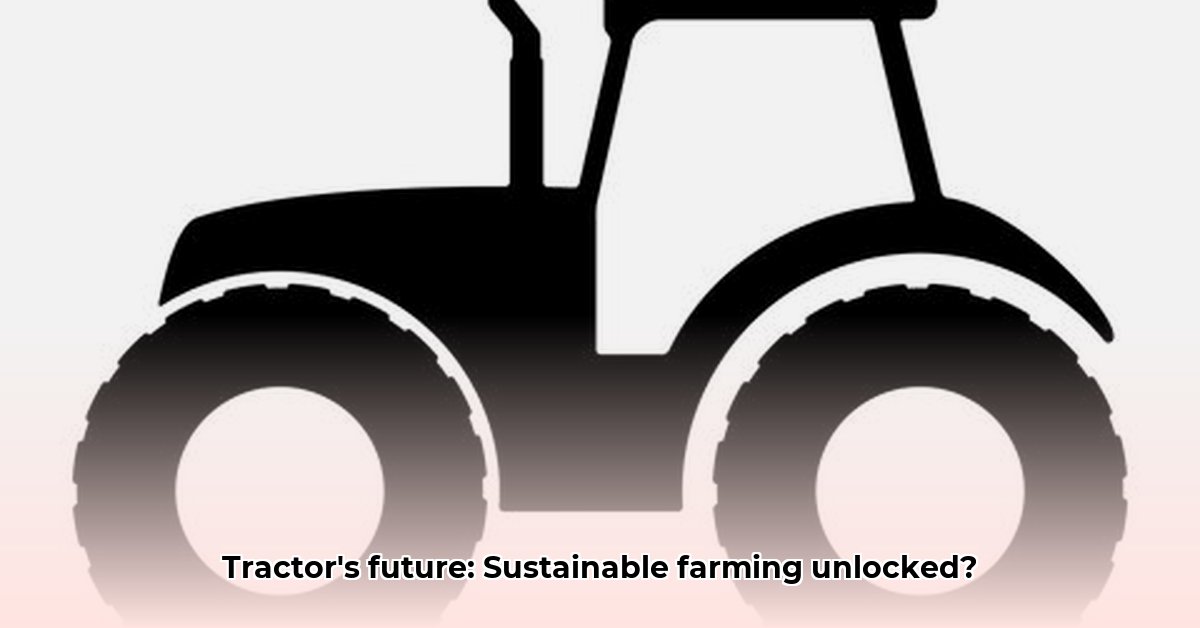
The humble tractor, a symbol of agricultural might, is undergoing a quiet revolution. Its silhouette, once a simple representation of farming machinery, now embodies a technological transformation that's reshaping how we grow food. This isn't just about bigger, faster machines; it's about smarter, greener farming practices that prioritize sustainability. Let's explore how this evolution reflects a profound shift towards a more environmentally conscious and economically viable future for agriculture. For those new to operating this vital piece of machinery, check out this helpful guide: Learn to Operate a Tractor.
The Evolution of Tractor Technology: From Muscle to Microchip
For generations, the tractor's silhouette represented raw, unwavering power – a machine that replaced human and animal labor, dramatically boosting agricultural efficiency. Early tractors were rudimentary, primarily focused on plowing and tilling. However, decades of innovation have led to significant advancements. Features like hydraulic lifts and three-point hitches dramatically increased versatility, allowing farmers to utilize a diverse range of implements. This flexibility enhanced productivity and reduced labor demands. But the true agricultural revolution is powered by data and technology that isn't always visible at first glance.
Precision Farming: The Smart Tractor Takes Center Stage
Today's tractor silhouette often implies far more than just metal and wheels. Advanced technologies like GPS guidance systems and onboard computers are transforming these machines into precision farming tools. Imagine a tractor effortlessly navigating fields, adhering to a pre-programmed route with pinpoint accuracy. This precision minimizes overlap, resulting in lower fuel consumption and reduced soil compaction—a crucial component of sustainable land management. It's not just about completing the task; it's about achieving efficiency and sustainability simultaneously.
Furthermore, sensors embedded within the tractor or strategically placed throughout the fields collect vast amounts of data. These sensors monitor soil conditions, moisture levels, and even the health of individual plants. This data empowers farmers to make informed decisions, optimizing fertilizer and pesticide application. The outcome? Reduced chemical use, minimized environmental impact, and healthier, more robust crops. It's akin to having a team of agricultural experts working alongside each farmer, all fueled by technology and data-driven insights. Isn't it remarkable how a silhouette can encompass such sophisticated capabilities?
The Data Revolution: Turning Information into Actionable Insights
The data gathered by these sophisticated systems isn't passive; it's actively utilized. Sophisticated software analyzes this information, providing farmers with real-time insights into their fields. They can monitor crop health remotely, adjust irrigation schedules based on precise moisture readings, and identify areas requiring targeted intervention—all from the convenience of their office or even a smartphone. This level of precise control minimizes waste, improves yields, and contributes significantly to more sustainable agricultural practices. The tractor becomes more than just machinery; it's a data-gathering hub, a precision instrument, and a key component of a connected agricultural ecosystem. How has this increased data access impacted your farming practices?
Addressing Challenges and Seizing Opportunities
While the vision of data-driven farming is alluring, considerable challenges remain. The substantial initial investment required for precision agriculture technology can be a major barrier, especially for smallholder farmers. Ensuring equitable access to these technologies and providing comprehensive training is crucial for widespread adoption and the realization of sustainable agricultural practices for all.
Moreover, concerns about data privacy and security warrant careful consideration. The extensive datasets generated by these advanced systems hold considerable value, necessitating stringent data protection. Robust security protocols and transparent data management practices are essential for building trust and facilitating responsible innovation.
Lastly, reliable infrastructure, particularly high-speed internet access in rural areas, is paramount for the seamless operation of precision farming technologies. Expanding broadband access in underserved communities is crucial for bridging the digital divide and ensuring all farmers can benefit from these technological advancements.
The Future of the Tractor Silhouette: A Sustainable Vision
The tractor's silhouette is not merely a static image; it represents an ongoing evolution in farming. It embodies not only technological progress but also a fundamental shift in our approach to food production. While challenges undoubtedly persist, the potential benefits—increased efficiency, reduced environmental impact, and enhanced food security—are immense. As technology continues to advance and collaborations between researchers, developers, and farmers strengthen, we can anticipate even more innovative solutions, further enhancing the sustainability and efficiency of modern agriculture. The narrative of the tractor's evolution is far from complete; it's a story of innovation, adaptation, and a steadfast commitment to a more sustainable future.